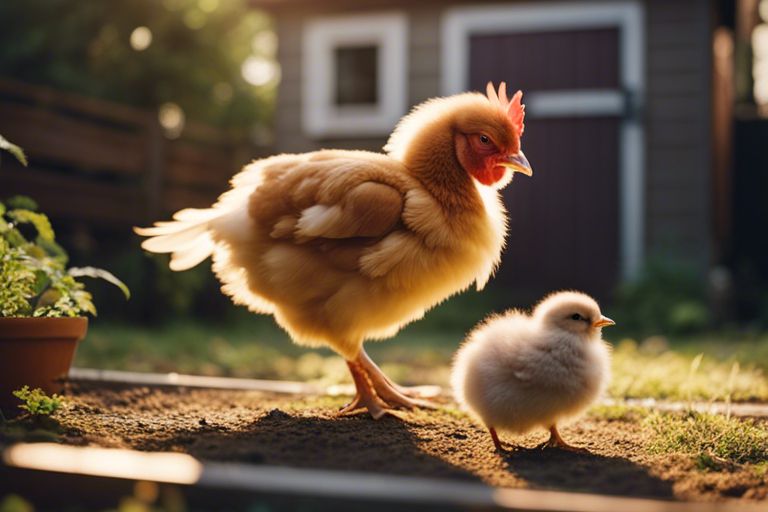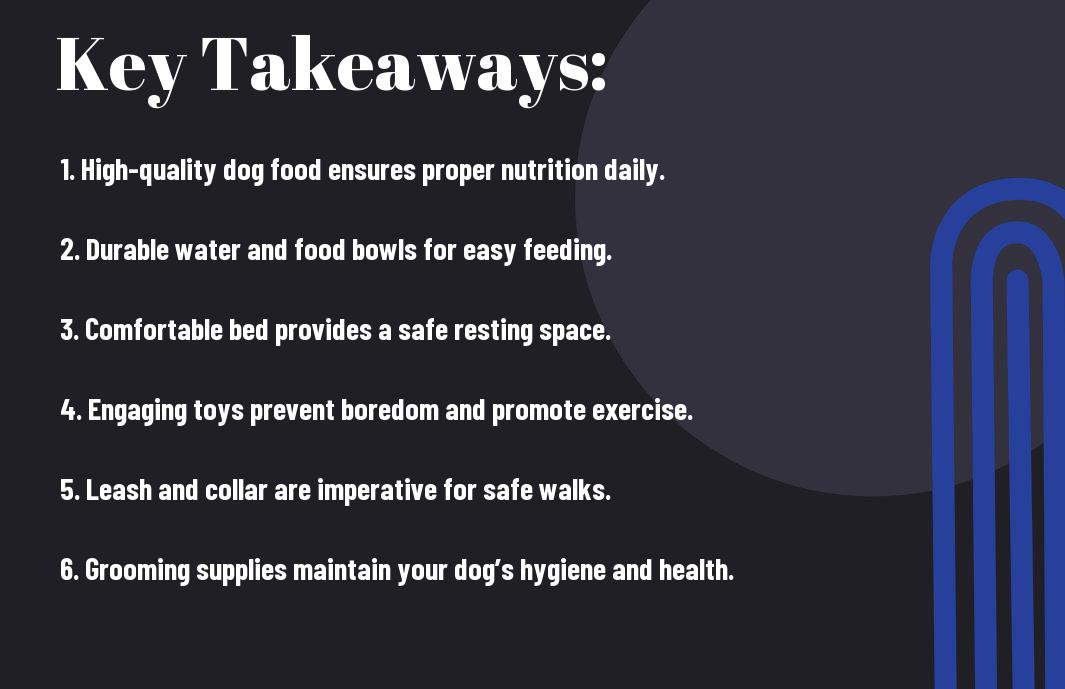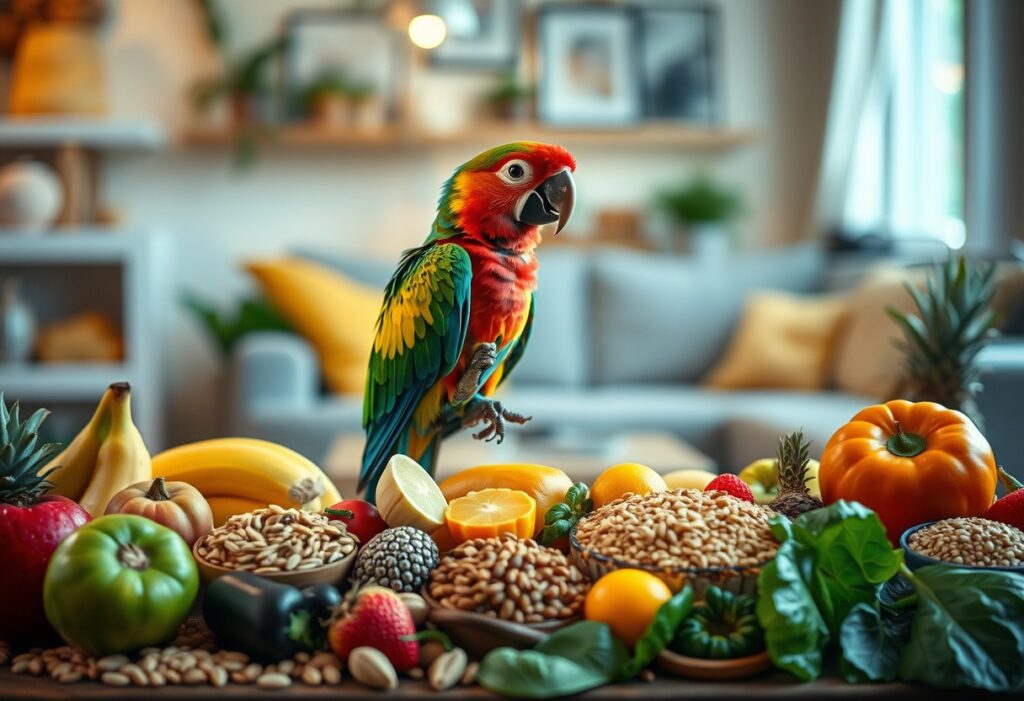Just when you think of becoming a bird parent, you might find yourself in the delicate position of hand-feeding baby birds. Understanding the proper techniques for feeding is crucial, as improper methods can lead to health complications or even death. You will learn how to prepare a nutritious formula, identify the right feeding tools, and ensure safe feeding practices. Whether you are caring for an orphaned chick or raising a hatchling, mastering these skills will help you nurture and bond with your feathered friends effectively.

Understanding Baby Bird Nutritional Needs
Your journey into the world of hand-feeding baby birds begins with a keen understanding of their unique nutritional requirements. Providing the right nutrients is crucial for their growth and development, and this varies significantly among different species. When you begin feeding baby birds, it’s vital to recognize the specific needs of their species, as each type of bird will have a different dietary requirement that supports their health, immunity, and overall well-being.
Types of Baby Birds
An array of baby birds exists, and understanding these types can guide you in selecting the appropriate feeding methods and formulas. From parrots and songbirds to raptors and waterfowl, these young birds have varied nutritional demands influenced by their species-specific growth rates, digestive systems, and foraging behaviors.
| Type of Baby Bird | Feeding Method |
| Parrots | Hand-feeding with a high-fat formula |
| Songbirds | Soft fruits and specially formulated diets |
| Raptors | Feeding raw meat and whole prey |
| Waterfowl | Wet mash feeds and greens |
| Game Birds | Specialized diets rich in protein |
Any feeding method you choose should cater to the specific needs of the bird species in your care. This foundational understanding will help you determine the right nutritional strategy for successful hand-feeding.
Essential Nutrients for Growth
Baby birds require a variety of vital nutrients to thrive, as these components are pivotal for their healthy development. The main nutrients to focus on include proteins, fats, vitamins, and minerals. These nutrients contribute to tissue growth, energy production, and the development of the immune system. Without adequate nutrition, young birds may suffer from growth stunting or even more severe health issues.
Baby birds are especially sensitive to deficiencies or imbalances in their diets. For instance, an insufficient amount of protein can result in slow growth rates, while a lack of calcium may lead to skeletal deformities. It’s a vital task to ensure that every feeding offers a well-rounded blend of nutrients tailored to the specific developmental stages of the bird. By doing so, you’re providing the building blocks necessary for their future health and vitality. Many feathered friends will benefit significantly from a nutritionally complete formula designed specifically for their species.
Types of baby birds come with a myriad of feeding requirements, and keeping these in mind allows for more effective hand-feeding practices. With the right approach, you’ll foster their growth while ensuring their dietary demands are met with care and precision. Remember that a small mistake can lead to serious complications, so taking the time to learn about each bird’s needs will pay off in the long run.

Preparing the Feeding Mixture
One of the most crucial steps in hand-feeding baby birds is preparing the appropriate feeding mixture. The right balance of nutrients can make all the difference in their development and overall health. Before exploring into the preparation process, it’s necessary to choose the right formula suited for the specific species you are nurturing. This ensures they receive the correct vitamins and minerals necessary for their growth.
Recommended Formulas
Formulas designed for baby birds usually come in powdered form and require mixing with warm water to create a nutritious slurry. There are several *commercially available formulas* that cater to a wide variety of bird species, such as *Kaytee Exact Hand Feeding Formula*, *Roudybush Hand Feeding Formula*, and more. These formulas have been specifically created to mimic a bird’s natural diet, ensuring that your feathered friend receives the *necessary amino acids, proteins, and carbohydrates* needed for healthy growth.
It’s important to check the ingredient list for any *potential allergens* or fillers that could be harmful to your baby bird. Make sure to choose a formula that is appropriate for the age of your bird, as *neonates*, *weaning*, and *older chicks* often require different nutritional compositions. If you are unsure about the formula, consulting a veterinarian or avian expert can be invaluable.
Mixing Techniques
Feeding your baby bird the correct mixture is necessary, but knowing how to mix it is just as critical. When preparing the feeding formula, always use *filtered or bottled water* to minimize the risk of harmful contaminants. Begin by measuring out the recommended amount of powder and gradually add warm water until you achieve a *smooth, lump-free consistency*. Make sure the mixture is not too thick or too thin; a suitable consistency should be similar to that of *thick, warm oatmeal*.
Once you have mixed your formula, it is vital to check the temperature before feeding. The mixture should be at a temperature slightly warmer than your body temperature, around *100 to 106 degrees Fahrenheit*. Always test it on your wrist to ensure it’s not too hot, as feeding your baby bird *heated mixture* can lead to serious burns. After mixing, be sure to use the formula within an hour or two to maintain its *freshness and nutritional value*.
Mixture preparation is not just about getting the ingredients right; it’s also about ensuring that the final product is safe and effective. Make sure to use clean utensils and containers during the mixing process, as *bacteria and pathogens* can thrive in dirty equipment and may pose a *serious health risk* to your baby bird. Additionally, always dispose of any uneaten mixture within a few hours to prevent spoilage. Taking these precautions will help ensure a healthy feeding routine for your baby bird.

Hand-Feeding Techniques
Unlike many other aspects of bird care, hand-feeding baby birds requires a balance of finesse and attentiveness. It is critical to understand the best practices to ensure your feathered friends thrive. Proper hand-feeding techniques can make a significant difference in the health and development of your baby birds, ensuring they receive the adequate nutrition they need to grow strong.
Choosing the Right Tools
With the right tools at your disposal, the hand-feeding process can become smoother and more effective. Your primary tool will be a feeding syringe or tubing. These allow for targeted feeding without overwhelming the bird. Additionally, you may find that small spoons or dropper bottles can also be effective, especially for larger species.
It’s vital to have sterilized tools to prevent the introduction of harmful bacteria. Choose tools that are easy to clean and durable enough to withstand repeated use. You may also want to consider using heat pads to keep the food warm and comfortable for your baby birds during feeding.
Temperature and Consistency of Food
Tools are not the only thing to consider; the temperature and consistency of the food you prepare play a significant role in the feeding process. Ideally, the formula should be warm but not hot, resembling the body temperature of the baby bird. This not only promotes better digestion but also ensures the comfort of your babies.
Temperature and Consistency Guidelines
| Temperature | 98°F to 100°F (37°C to 38°C) |
| Consistency | Smooth, resembling a runny oatmeal |
Plus, the consistency of the food is vital. It must be smooth and free from lumps to prevent choking. A blender is often your best friend for achieving this texture. If the food is too thick, you can add a little water or formula to thin it. Always test the food’s temperature on your wrist before feeding to ensure it won’t burn your baby birds. Keeping in mind that your little ones will need adjustments in their feeding formula as they grow, constantly evaluate the texture and temperature to suit their needs.
Positioning the Bird
For effective hand-feeding, the positioning of the bird is crucial. Ensure that the baby bird is comfortably cradled in your hand or resting on a flat surface that provides support. Use your free hand to guide the feeding tool to the bird’s beak. This support helps the bird feel secure and minimizes stress during feeding.
Moreover, it’s important to maintain a calm and quiet environment while feeding. Birds are sensitive to sounds and movements, so try to create a soothing atmosphere. You may also need to adjust the bird’s angle to ensure they can swallow comfortably. Holding them upright or slightly tilted can help promote better swallowing, reducing the risk of aspiration.
Choosing the right techniques for hand-feeding baby birds can make the process positive and successful. As you develop your skills, remember to prioritize the health and safety of your birds over convenience. By paying attention to temperature, consistency, and positioning, you can foster an environment conducive to their growth and well-being.
Post-Feeding Care
Despite the joy that comes from successfully feeding a baby bird, your responsibilities continue after feeding time. Post-feeding care is crucial for ensuring the health and growth of your young feathered friend. This includes monitoring their condition, keeping their environment safe, and being vigilant about any signs of distress or feeding issues.
Monitoring Health and Weight
To maintain optimal health for your baby bird, it’s crucial to closely monitor their weight and overall well-being. Weigh your bird daily using a precise scale to track any changes. A consistent increase in weight is a positive indicator, while loss of weight may signal an underlying problem that needs to be addressed immediately. Make sure to keep notes about their weights to help identify any concerning patterns over time.
Additionally, note any changes in their behavior or appearance. Healthy baby birds typically display active movements, curiosity, and vocalizations. Make sure to watch for signs of lethargy, fluffed feathers, or a lack of interest in food, all of which can indicate that your bird may require assistance or a visit to the veterinarian.
Signs of Feeding Problems
With each feeding, you should be aware of the potential signs that indicate feeding problems in your baby bird. If your bird consistently rejects food or shows a significant decrease in eating, this could signify a serious issue that should not be overlooked. Delayed growth and abnormal droppings can also be indicators that your bird is not receiving the proper nutrition it needs for healthy development.
Weight loss is particularly alarming. A baby bird should gain weight steadily; if you notice a loss of more than 10% of its body weight over a few days, seek veterinary assistance immediately. Additionally, an unusual posture or lack of response to feeding attempts may indicate that your baby bird is struggling, and intervention may be necessary to ensure its survival. By staying informed and observant, you can act swiftly to help your bird thrive.
To Wrap Up
From above, it’s clear that successfully hand-feeding baby birds requires knowledge, patience, and proper techniques. By understanding the specific dietary needs of your feathered friends and choosing the right feeding tools, you can provide them with the nourishment they need to thrive. It’s imperative to maintain a clean and safe environment for your baby birds, as well as to monitor their health consistently. Remember to be gentle during the feeding process and to pay attention to their cues to ensure a positive experience for both you and your birds.
By adopting the best methods for hand-feeding, you not only foster a strong bond with your baby birds but also set them up for a healthy and happy life as they grow. Whether you’re a novice or a seasoned bird owner, staying informed about best practices will enhance your skills and boost the well-being of your baby birds. Ultimately, your dedication to their care will make all the difference in their development and the joy they bring to your life.
FAQ
Q: What is the best type of formula to use for hand-feeding baby birds?
A: The best type of formula for hand-feeding baby birds is a high-quality, nutritionally complete commercial formula specifically designed for the species you are feeding. These formulas, often available in powder form, can be mixed with water to the appropriate consistency. Ensure that the formula is suitable for the age and species of the bird to meet their specific nutritional needs. Always read the label for instructions on preparation and storage, and consult a veterinarian for recommendations tailored to your specific bird species.
Q: How do I determine the right temperature for the formula when hand-feeding?
A: The ideal temperature for hand-feeding baby birds is generally around 102°F to 106°F (approximately 39°C to 41°C). To check the temperature, you can use a thermometer or drop a small amount of formula on the inside of your wrist to ensure it feels warm but not hot. It’s important to avoid overheating the formula, as it can burn the baby bird’s delicate crop. Always prepare the formula in advance and use a heat source or warm water bath to maintain the proper temperature right before feeding.
Q: What techniques should I use for successfully hand-feeding baby birds?
A: When hand-feeding baby birds, it is crucial to employ gentle techniques to ensure their comfort and safety. Start by securely but gently holding the bird to prevent squirming. Use a feeding syringe or a small spoon to offer the formula, making sure not to overfill the bird’s beak. Gently approach the bird from the side and encourage it to open its mouth by gently tapping its beak or by offering the formula. Feed a small amount at a time, allowing the bird to swallow before offering more. Always clean the feeding tools between feedings to prevent introducing bacteria. It’s also important to monitor the baby bird’s weight and adjust feeding amounts and frequency based on their specific growth needs.










